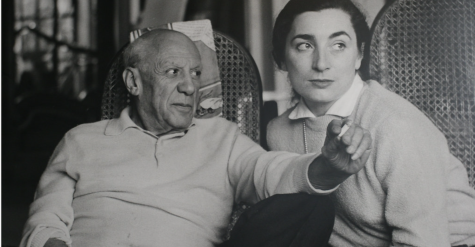Opinion: It is difficult to separate art from an artist
April 12, 2022

When I was eight years old, I became obsessed with the “Harry Potter” series by J.K. Rowling. I opened those books and it felt like they were a world made specifically for me, written by a person who understood what I needed to read. More recently, when I learned about Rowling’s transphobic attitudes, it felt like a betrayal. It pains me that an author who I once adored uses her platform to stoke hatred of the transgender community.
After accusations of transphobia, Rowling published an essay defending her stance. Reading this essay in 2020 remains stark in my memory because it made me so angry at a woman whom I once considered a role model.
“I refuse to bow down to a movement [trans rights movement] that I believe is doing demonstrable harm in seeking to erode ‘woman’ as a political and biological class and offering cover to predators like few before it,” Rowling said. She conflated trans women with sexual predators who wanted to be recognized as female so they could assault women in public restrooms.
This called my connection with “Harry Potter” into question. After gaining an understanding of Rowling’s character, I began to notice problematic elements of the series. This experience made me realize that it is impossible for an artist to create something without their personal ideas permeating into their work, and therefore, it is impossible to separate art from the artist.
For example, the only Asian character in the “Harry Potter” series is named Cho Chang, which is a stereotypical and unrealistic name. Additionally, many of the antagonists of the book conveniently happen to be the only fat characters in the book, like Potter’s abusive family, the Dursleys. She also described goblins, the magical world’s bankers, as having long noses and other stereotypically Jewish traits.
Pew Research reports that in a 2020 survey, 58% of American adults said that publicly calling people out for their problematic behavior, or “cancel culture,” holds people accountable for their actions. However, in a related survey, 55% of Americans said that they think the internet community takes offensive content too seriously.
While this data appears to be conflicting, I think that it is astute when it comes to “canceling” artists and their work. Being overly critical of artists is a slippery slope. Every person is inherently flawed and therefore every artist is flawed, but an understanding of how those flaws manifest in art can help us understand the art better.
Pablo Picasso’s painting “Minotaur caressing a sleeping woman” appears to be harmless at first glance. It depicts a minotaur looming over a woman with her eyes closed and could very well be a condemnation of sexual assault. However, when learning about the artist’s misogynistic attitudes, the painting embodies a far more sinister interpretation.
According to Artspace, Picasso regarded women as “either goddesses or doormats” and “machines for suffering.” With this understanding of Picasso’s beliefs, it becomes clear that he imagined himself as the beast ostensibly raping a woman in the painting. It should also be noted that in Greek mythology, the minotaur is a man-bull and the product of sexual coercion. Picasso’s ideas infiltrate the painting. Taking this into account, our impressions of the piece can become more nuanced and accurate.
If you ignore an artist’s perspective when you experience their creations, you sell that creation short. Even if it is uncomfortable, we have to recognize artists’ problematic attitudes when we consume their work. With Picasso’s work, this also helps us analyze his work in a more holistic light.
Unlike Picasso’s paintings, however, the “Harry Potter” series is not intended to be analyzed. It is merely entertainment. Because of this, analyzing its problematic nature adds little to the work’s value. While it must be acknowledged, it is not embedded in the purpose of the work like Picasso’s painting. Therefore, I encourage you to read other books instead of “Harry Potter.”.
I have no issue finding books by diverse authors whose views align with mine as a substitute for problematic authors. Their messages deserve attention and I find that I enjoy their books more because I can read them without having a bad taste in my mouth.
When it comes to visual artwork, it is common for us to take the artist’s life experience into account when we analyze it because it helps us understand what motivated the artist to craft the piece. We should also incorporate their prejudices into our discussion of the work, even if doing so is unnerving.







